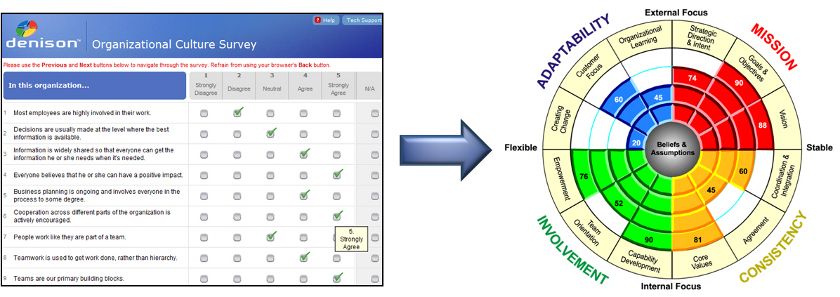Culture makes a real difference. In 1991 Kotter and Heskett from Harvard University published results of a decade of research into the best and worst performing firms across a range of industries. The research surprised no one in that it established that strong cultures outperform poor cultures, but what was surprising was the extent of the difference. The best dramatically outperformed firms with mediocre cultures across a wide range of measures. Kotter and Heskett highlighted the impact of shared values and unwritten rules, and of the roles leaders play in stimulating such cultures.
In 1994 Jim Collins and Jerry Porras from Stanford University looked at not the best and the worst, but the best and their prime competitors, the second best, across a dozen industries. Their study sought to discover the secrets of those firms that built long term success and generated exceptional long term value with comparison firms whose track records, while far better than the market average, still fell a long way short of the industry leader. They demonstrated that the exemplar companies had the sense of stewardship, vision and discipline required to build for the long term and they also had leaders who understood that the essence of the firm (the vision and values) must be delivered on a daily basis by aligning strategy with culture and aligning values and behaviour.
More recent research by Daniel Denison from the University of Michigan has identified the types of culture which are related to specific performance outcomes. His research shows that what he terms mission and consistency cultures produce the best financial returns, while those he describes as involvement and adaptable cultures are associated with innovation.
We know there is a strong growing body of evidence, both anecdotal, and research based which establishes the key role played by culture in organizational performance. But which comes first, strategy or culture? Many firms have put considerable energy into getting the strategy right, but perhaps have neglected culture.
Research released by Mike West from the U.K.'s Aston Business School, comparing the impact of strategy and culture, indicated the key variable again is clearly culture. Looking at 100 firms, over an eight year period, drawn essentially from the manufacturing industry, he reports that 17% of the variance in performance could be attributed to culture, while strategy accounted for a mere 2% of the variance. The point is not which comes first, rather which requires more emphasis.
Strategy needs the support of culture The implications for business performance in general are clear. Strategy alone will not enable you to outperform your competitors or achieve your business intent. Success requires a clear focus certainly, a distinctive capability without question, but then optimum results will accrue to those who build the cultures which align with, and support, these strategies.





